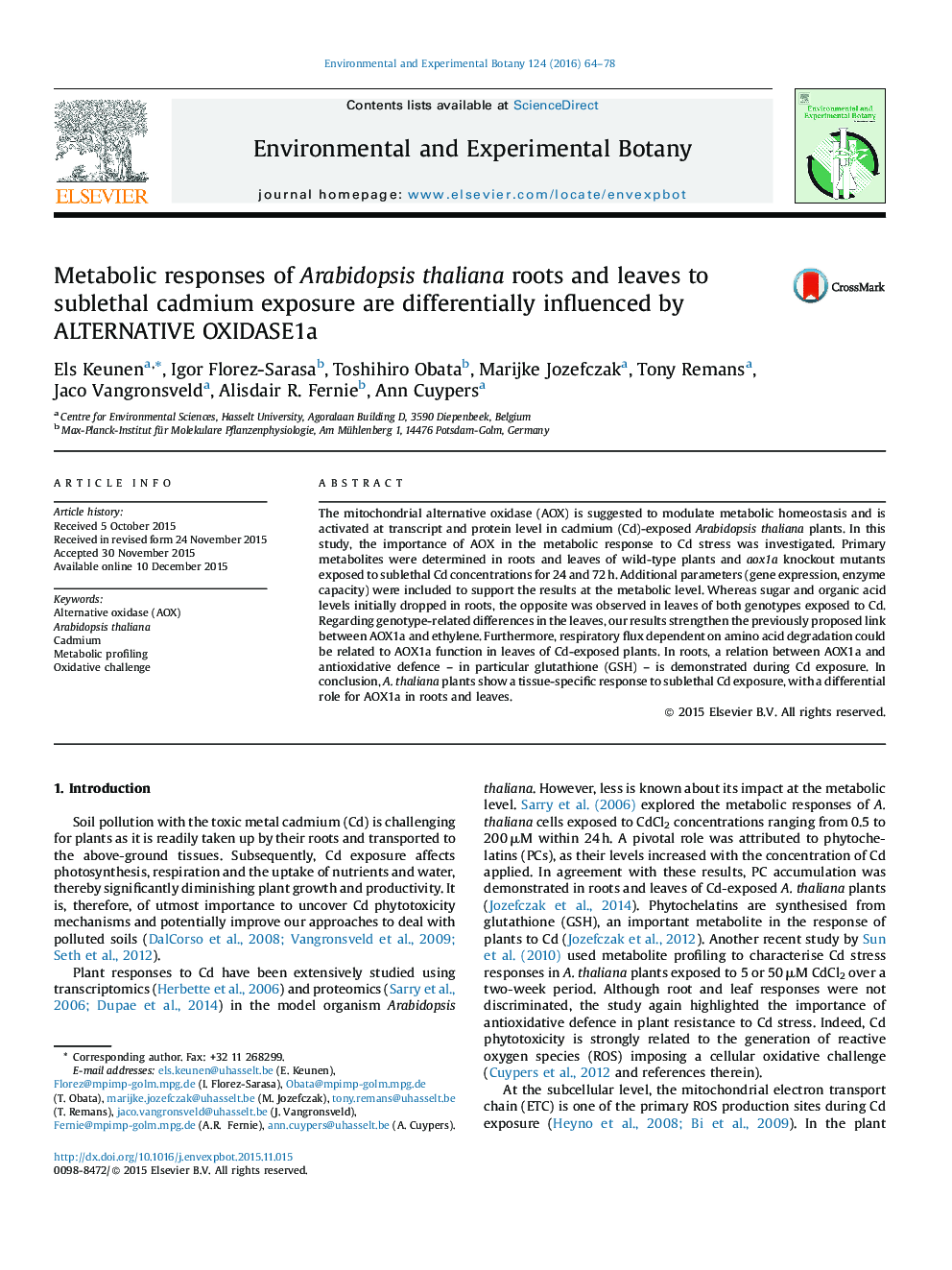| Article ID | Journal | Published Year | Pages | File Type |
|---|---|---|---|---|
| 4554183 | Environmental and Experimental Botany | 2016 | 15 Pages |
•Primary metabolism is differentially affected by cadmium (Cd) in roots and leaves.•Alternative oxidase1a (AOX1a) has a tissue-specific role during Cd exposure.•A lack of AOX1a leads to increased amino acid levels in Cd-exposed leaves.•A link is suggested between AOX1a and Cd-induced ethylene production in leaves.•In roots, AOX1a and glutathione (GSH) interact during Cd exposure.
The mitochondrial alternative oxidase (AOX) is suggested to modulate metabolic homeostasis and is activated at transcript and protein level in cadmium (Cd)-exposed Arabidopsis thaliana plants. In this study, the importance of AOX in the metabolic response to Cd stress was investigated. Primary metabolites were determined in roots and leaves of wild-type plants and aox1a knockout mutants exposed to sublethal Cd concentrations for 24 and 72 h. Additional parameters (gene expression, enzyme capacity) were included to support the results at the metabolic level. Whereas sugar and organic acid levels initially dropped in roots, the opposite was observed in leaves of both genotypes exposed to Cd. Regarding genotype-related differences in the leaves, our results strengthen the previously proposed link between AOX1a and ethylene. Furthermore, respiratory flux dependent on amino acid degradation could be related to AOX1a function in leaves of Cd-exposed plants. In roots, a relation between AOX1a and antioxidative defence – in particular glutathione (GSH) – is demonstrated during Cd exposure. In conclusion, A. thaliana plants show a tissue-specific response to sublethal Cd exposure, with a differential role for AOX1a in roots and leaves.
